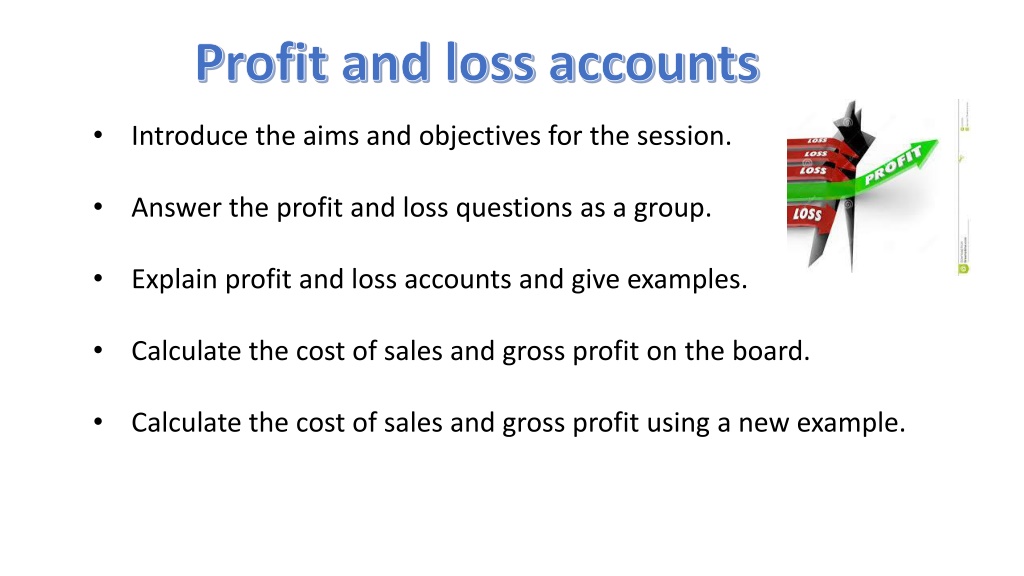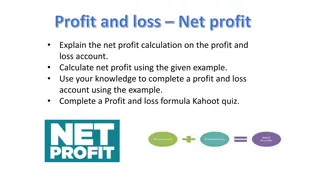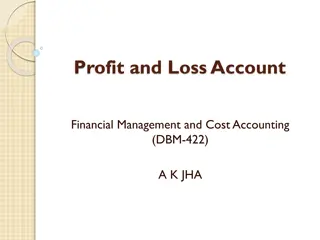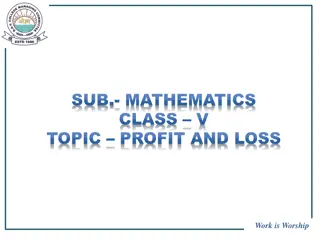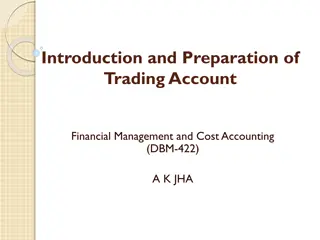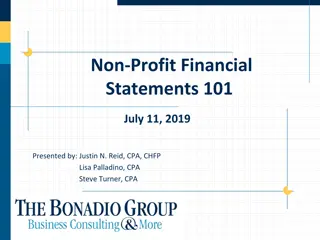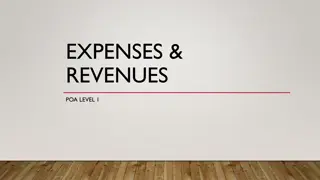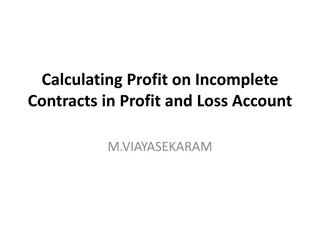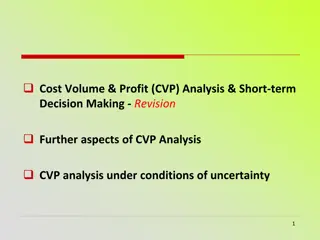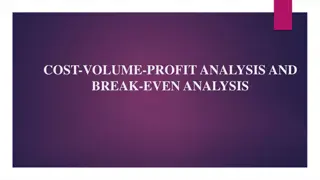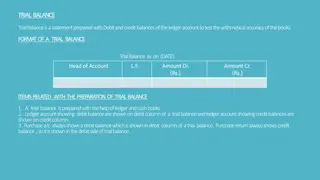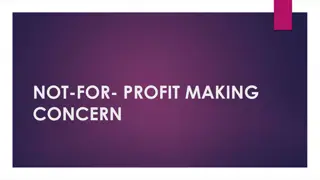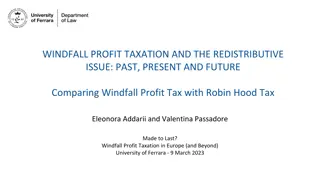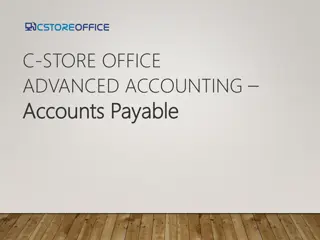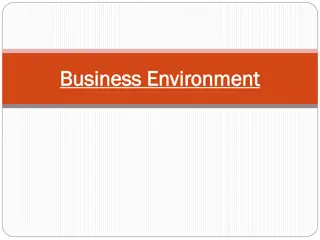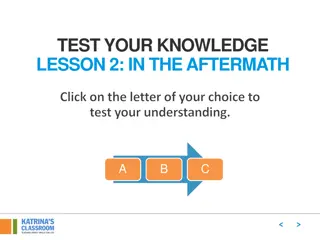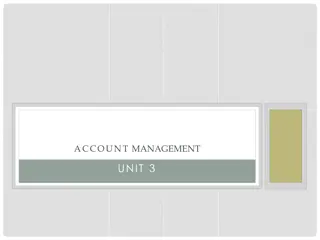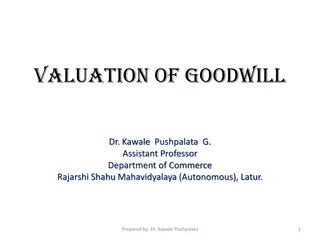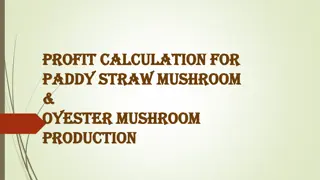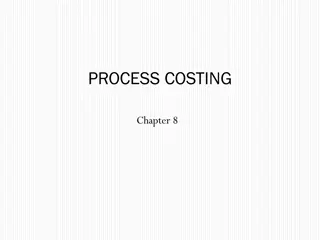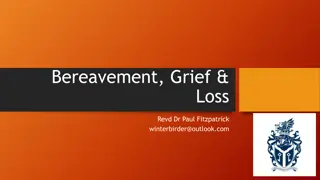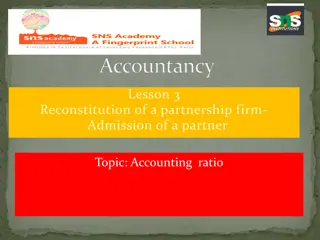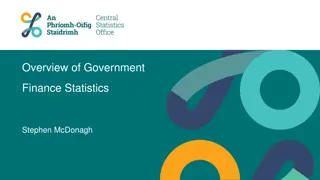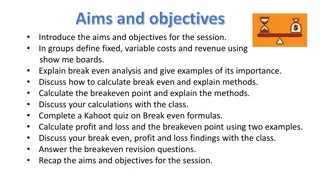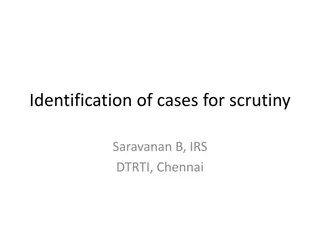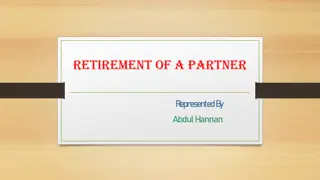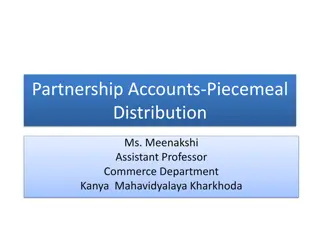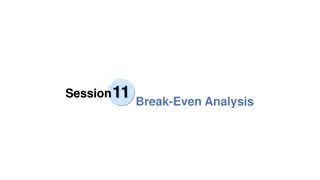Understanding Profit and Loss Accounts in Business
Profit and loss accounts provide a detailed overview of a business's trading income and expenditure over the previous 12 months. They involve calculating key figures like cost of sales and gross profit to assess the financial performance. This session aims to explain the concepts, answer common questions, and provide examples to enhance understanding.
Download Presentation

Please find below an Image/Link to download the presentation.
The content on the website is provided AS IS for your information and personal use only. It may not be sold, licensed, or shared on other websites without obtaining consent from the author. Download presentation by click this link. If you encounter any issues during the download, it is possible that the publisher has removed the file from their server.
E N D
Presentation Transcript
Profit and loss accounts Introduce the aims and objectives for the session. Answer the profit and loss questions as a group. Explain profit and loss accounts and give examples. Calculate the cost of sales and gross profit on the board. Calculate the cost of sales and gross profit using a new example.
Profit and loss questions 1)When would you make a profit ? (Cost of sales) 2)When would you make a loss? (Cost of sales) 3)What is an expense? 4)If expenses are more than revenue you will make a ? 5)What is the cost of sales Give an example?
Profit and loss account Profit and loss accounts are said to give a historic view of the business s trading income and expenditure over the previous 12 months. The account will show all income and expenditure received and incurred over the previous year.
Profit and loss account The first section of a profit and loss account is sometimes referred to as the trading account. The trading account shows what the sales of the business have been and the direct costs of making those sales known as the cost of sales. When we take the cost of sales away from the sales of a business, the figure we are left with is known as gross profit. This is the first figure of real importance.
Profit and loss example The profit and loss account for Frying Tonite (a takeaway) for the year 2013 14 is shown to the right. It is normal practice for profit and loss accounts to be produced for 12 months trading. However, the 12 months do not have to run from January to December they can cover any 12 consecutive months.
Profit and loss Frying tonite The profit and loss account of Frying Tonite shows the income the business has received from its trading activities over the last 12 months, and all the money it has spent performing these business activities over the same 12 months.
Profit and loss Turnover Because the profit and loss account looks back over the past twelve months the first line always gives the business s trading income for the year: i.e. the revenue gained from the goods the business has sold, or the services it has provided. Trading income can be called different things: sales or revenue or income or turnover , but they all mean the same thing.
Cost of sales Cost of sales these are the direct costs of purchasing the stock that is used in sales. For Frying Tonite this would include fish, oil, potatoes etc. To calculate the cost of sales, we must first add opening stock (i.e. the stock the business has at the beginning of the year) to purchases the business has made during the year. Once we have done this we take away closing stock (i.e. stock left over at the end of the year). We take away closing stock as it has not yet been sold or used, so it is not part of the cost of sales.
Profit and loss example (Part 1) Sales Cost of sales 96 500 Opening stock 3,900 Purchases 28,600 (less) closing stock 4,700 27,800 27,800 Gross profit 68,700
Cost of sales Cost of sales = opening stock + purchases closing stock So for Frying Tonite the calculation would be: 3900 + 28 600 4700 = 27 800
Gross profit The figure for the cost of sales is placed in the second column, below the sales figure. Gross profit is calculated by taking the cost of sales away from sales. Gross profit = Sales Cost of sales For Frying Tonite sales are 96 500, the cost of sales are 27 800, so: 96 500 27 800 = 68 700
Gross profit explained Gross profit is an indicator of how efficient the business is at making and selling its product. However, the figure for gross profit on its own does not help us judge the level of efficiency: after all, a large business is likely to have a much higher gross profit figure than a small business, but the small business could be better run or have less stock damage.
Activity 1 Task: Calculate Cost of sales and gross profit using the two examples provided. Written description on the board. Time: 20 mins
Profit and loss accounts Introduce the aims and objectives for the session. Answer the profit and loss questions as a group. Explain profit and loss accounts and give examples. Calculate the cost of sales and gross profit on the board. Calculate the cost of sales and gross profit using a new example.
